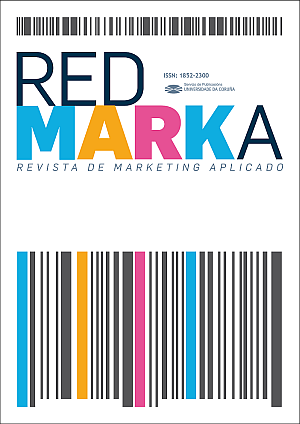Sections of immersive content on the web pages of European public broadcasters: a comparative case study
Main Article Content
Abstract
The media landscape goes through a period of experimentation with production and consumption. European public broadcasters want to innovate and differentiate themselves from mass media in order to attract audience again, but this in a moment of media saturation and rise of visual culture. The main challenge is to fight the obsolescence. For that purpose, broadcasters opt for alternatives linked to the application of new technologies and formats and to create active audiences. Thus, there emerges the implementation of immersive narratives, based on 360-degrees recording techniques and/or virtual reality production. This kind of products allows users a first-person experience of news, events or entertainment issues. European broadcasting Union has attempted to promote this innovation among its members. In fact, the 67% of European Union´s public broadcasters, members of the above-mentioned association, had applied immersive narratives on non-fiction content up to April 2017. Therefore,the aim of this study is to find out how broadcasters organize and give visibility to their immersive pieces, specifically, creating sections on their websites. To that end, a comparative study has been carried out on the immersive content sections of the BBC (United Kingdom), ZDF (Germany), RTBF (Belgium) and RTVE (Spain). A quantitative analysis trough data collection and then codification using an analysis sheet. The objective is to identify if these sections make easier the access and so the consumption of immersive products, if the titles of sections reflects properly their content and how this is organized on these pages.
Keywords:
Downloads
Article Details
References
Baía, A. (2016). Mundos virtuais e jornalismo imersivo: uma resenha histórica e conceptual. Estudos de jornalismo, 6(1), 100-112.
Benítez-de-Gracia, M.J. y Herrera-Damas, S. (2018). El reportaje inmersivo en vídeo 360º: diseño de un modelo de análisis. El profesional de la información, 27(1), 149-161. DOI: https://doi.org/10.3145/epi.2018.ene.14
De la Peña, N. et al (2010). Immersive Journalism: immersive virtual reality for the first-person experience of news. Presence: Teleoperators and virtual environments, 19(4), 291-301.
Domínguez, E. (2017). Going beyond the classic news narrative convention: the background to and challenges of immersion in journalism. Frontiers in digital humanities, 4: 10. DOI: https://doi.org/10.3389/fdigh.2017.00010
Doyle, P., Gelman, M. y Gill, S. (2016). Viewing the future? Virtual reality in journalism. Knight Foundation. Recuperado el 10 de febrero de 2018, de https://goo.gl/ZJX4UG
European Broadcasting Union (2016). Vision 2020: connection, grow and influence. Recuperado el 7 de febrero de 2018, de https://goo.gl/DrgknD
European Broadcasting Union (2017). Virtual reality: How are public broadcasters using it? Ginebra: Technology and Innovation.
Hardee, G. M. (2016). Immersive Journalism in VR: Four Theoretical Domains for Researching a Narrative Design Framework. En S. Lackey y R. Shumaker (Eds.), Virtual, Augmented and Mixed Reality. VAMR 2016. Lecture Notes in Computer Science, 9740. Springer, Cham.
Kapp, K. (2012). The gamification of learning and instruction: game-based methods and strategies for training and education. San Francisco: Pfeiffer
Longui, R. (2016). Narrativas imersivas no webjornalismo. Entre interfaces e realidade virtual. En 14º Encontro Nacional de Pesquisadores em Jornalismo en Palhoça-Unisul, Brasil.
Newman, N. y Fletcher, R. (2017). Bias, bullshit and lies. Audience perspectives on low trust in media. Oxford: Reuters Institute for the Study of Journalism.
Owen, T., Pitt, F., Aronson-Rath, R. y Milward, J. (2015). Virtual reality journalism. Recuperado el 8 de febrero de 2018, de https://goo.gl/sywz5R
Pérez-Montoro, M. (2010). Arquitectura de la información en entornos web. Gijón: Trea.
Pérez-Seijo, S. y López-García, X. (2017). Xornalismo inmersivo e televisión públicas europeas: plataformas, aplicacións e posibilidades de consumo. En I Congreso Internacional AGACOM Alén das fronteiras: redes na diversidade, Universidade de Santiago de Compostela, España.
Salaverría, R. (2016). Los medios de comunicación que vienen. En C. Sádaba, M.D. Martínez-Costa y J.A. García (eds.), Innovación y desarrollo de los cibermedios en España (255-263). Pamplona: EUNSA.
Smith, W. (2015). Stop Calling Google Cardboard’s 360-Degree Videos ‘VR’. Wired. Recuperado el 7 de febrero de 2018, de https://goo.gl/Y5MoiA






